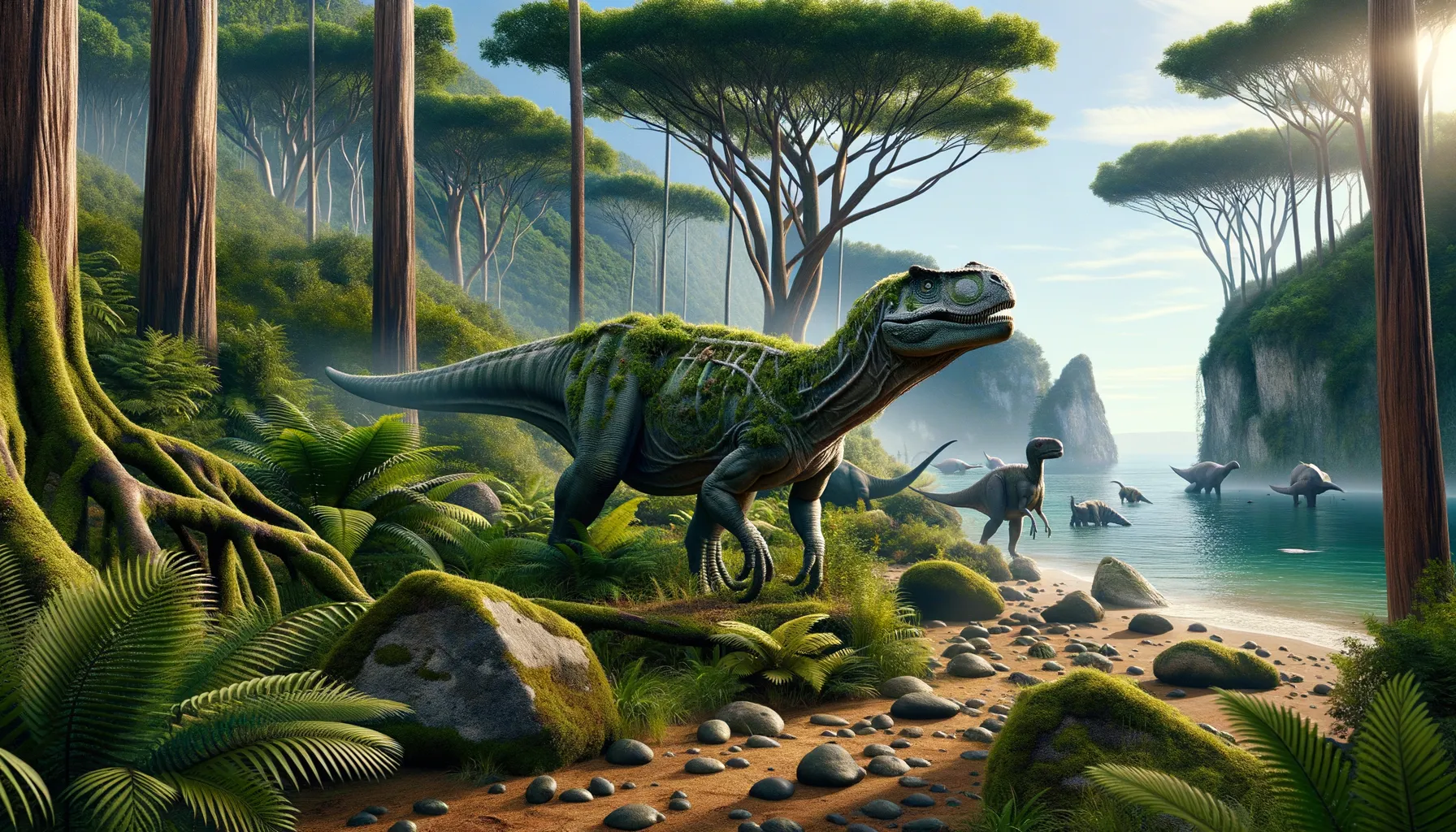
Alocodon
Tiny but crucial in the Jurassic landscape.
Period
Jurassic
Length
Roughly 1 meter long.
Height
About 30 centimeters tall.
Weight
Approximately a few kilograms.
Alocodon was a small, plant-eating dinosaur that roamed the Earth during the Jurassic period. It is known primarily from fossilized teeth found in Portugal, offering valuable insights into its diet and lifestyle. Despite its modest size, Alocodon played a crucial role in its ecosystem. Its discovery has helped paleontologists understand more about the diversity of species existing in Europe during this era.
Diet
Alocodon was an herbivore, meaning it primarily fed on plant material. Its diet would have included a variety of ferns, cycads, and possibly early flowering plants. Its specialized teeth were adapted for processing tough vegetation.
Hunting
As an herbivore, Alocodon did not hunt for food. Instead, it foraged for plants, likely moving along the forest floor in search of vegetation. It would have used its keen sense of smell to locate food sources.
Environmental challenges
During its time, Alocodon faced numerous environmental challenges, including competition for food and water. It lived in a period marked by ever-changing landscapes and climate shifts. Predatory dinosaurs posed constant threats, requiring Alocodon to remain vigilant. Adaptations such as keen senses and possibly being able to burrow helped it survive these challenges.
Speed
Likely slow, due to its small size.
Lifespan
Estimated to be around 10 to 15 years.
First discovery
Discovered in Portugal in 1975.
Fun Facts
- Alocodon was a small dinosaur that lived during the Late Jurassic period, around 160 million years ago.
- This dinosaur's name means 'furrowed tooth', which refers to the unique grooves found on its teeth.
- Alocodon is primarily known from fossil teeth, which have been discovered in Portugal.
- It was likely a herbivorous dinosaur, given the shape and structure of its teeth.
- Despite its small size, Alocodon provides valuable insights into the diversity of Jurassic ecosystems.
- Alocodon is a great example of how even tiny fossil discoveries can contribute to our understanding of prehistoric life.
- The discovery of Alocodon highlights Portugal as an important region for paleontological research in the Jurassic era.
Growth and Development
Alocodon likely hatched from eggs and grew rapidly to reach its small adult size. Its growth stages might have included distinct juvenile forms that required less food, minimizing competition with adults. It may have developed social behaviors early on to boost survival rates. The presence of specific growth rings in its bones could have provided a record of its age.
Habitat
Alocodon inhabited the lush environments of ancient Europe, rich in plant life. It likely lived in forested areas with abundant understory vegetation. Its habitat provided both food and protection from predators. The presence of diverse plant species would have supported its herbivorous diet.
Interaction with other species
Alocodon coexisted with other herbivorous dinosaurs, likely sharing feeding grounds. It may have been preyed upon by larger carnivorous dinosaurs, always requiring vigilance. Symbiotic relationships with plant species could have existed, where Alocodon helped in seed dispersal. Its interactions defined its position in the food web of its time.
Natural lifespan
Alocodon may have lived up to 10-15 years in the wild.
Reproduction
Alocodon reproduced through eggs, like most dinosaurs. It may have laid clutches of eggs in nests constructed on the ground. Parental care could have been minimal, with juveniles quickly becoming independent. The survival of hatchlings depended heavily on finding enough food and avoiding predators.
Social behaviour
Alocodon might have lived in small groups, enhancing its foraging efficiency and safety. Social structures could have also involved communal nesting sites. Group living might have helped in detecting predators early. However, tension could arise over competition for limited food resources.
Fossil locations
Alocodon's fossils have been primarily found in Portugal, offering insights into its existence during the Jurassic period. Fossilized teeth have been key to identifying and studying this dinosaur. These discoveries help paleontologists understand the distribution of species in ancient Europe. The limited fossil record suggests it might have had a localized range.
